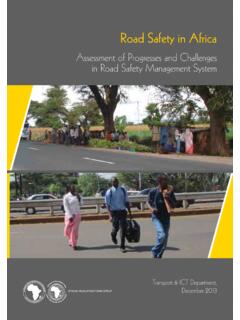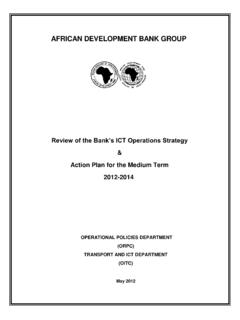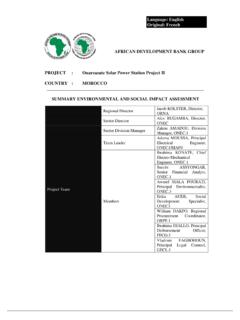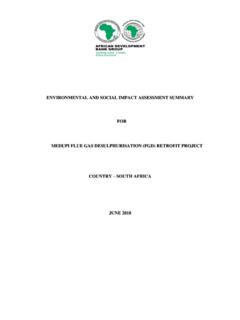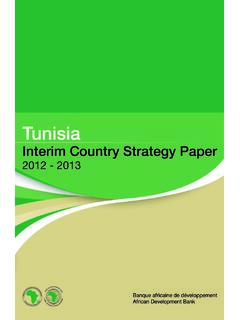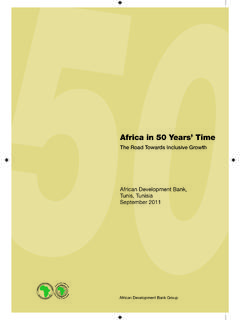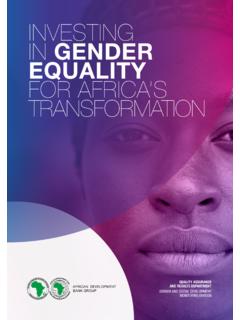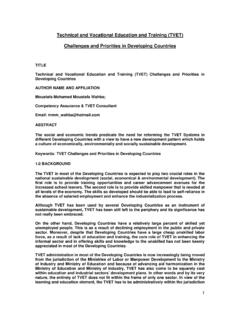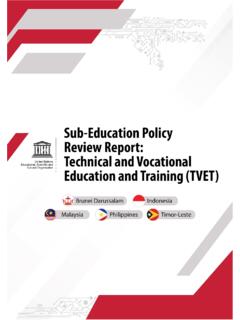Transcription of What is Technical and Vocational Education and Training ...
1 In the knowledge society of the 21st Century, dominated by information and communication technology, and where labor market demands are constantly changing, providing relevant TVET programs to both boys and girls is deemed central to the effort to foster sustainable development and attain MDG-1 . eradicating extreme poverty and hunger in Africa . (African Union, Second Decade of Education for Africa, 2006 2015, Draft Plan of Action, June 2006). What is Technical and Vocational Education and Training (TVET)? According to the definition by UNESCO and the International Labor Organization (ILO), TVET refers to aspects of the educational process involving, in addition to general Education , the study of technologies and related sciences, and the acquisition of practical skills, attitudes, understanding and knowledge relating to occupants in various sectors of economic and social life" (UNESCO and ILO, 2001). In addition to Technical knowledge and aptitude, increasing emphasis is on softer.
2 Skills communication, negotiation and teamwork. TVET is dispensed in public and private educational establishments, or other forms of formal or informal instruction aimed at granting all segments of the society access to life-long learning resources. Traditionally, so-called intellectual work is often contrasted with manual . work. Thus there would be, on the one hand, white-collar (office) professions and, on the other, traders, technicians, etc. Nowadays, such a distinction is no longer possible, even though society continues to undervalue and minimize Technical Education . Consequently, pupils facing difficulties in their studies are those usually sent to Vocational streams. This vision of TVET is attributable to the crisis that Africa went through in the eighties. The serious economic and financial crisis that the continent faced at the time generated far-reaching changes in the production system and the labor market, and contributed to increasing graduate unemployment.
3 Within that context, the TVET systems found themselves unable to provide the skills required by businesses. Facing increasing costs within the context of structural adjustment programs, TVET systems endured drastic budgetary reductions. Lastly, inadequate investments in TVET contributed to its deterioration and reduced its effectiveness. Yet, the principal objective of TVET is to train youths and adults alike, readying them for the labor market. With Technical revolution and innovations in science and technology, labor market needs have significantly evolved. New challenges must be met in order to match the Education proposed with Vocational demands. In that regard, several countries are in the process of reforming their Education system, with a view to Training youths to meet national, regional or international market needs. Today, the global economy offers Africa new opportunities. It also presents the continent with challenges that it cannot ignore.
4 Therefore, Africa must break this vicious cycle if it is to take its rightful place, given its enormous potential. Indeed, the purpose of this workshop - jointly organized by the ADB, the OIF and WAEMU - is to contribute to refocusing the discussion on TVET and enabling brainstorming on the appropriate policy options that would create new dymanics for Technical and technological Training in Africa. Although TVET also concerns tertiary-level Education , the three Institutions have opted to focus workshop deliberations on 1. secondary Technical Education which is the locus of middle-level Technical worker Training an indispensable fulcrum to all economic development. TVET is a complex and multi-dimensional field. Thus, statistics on TVET are generally inaccurate and difficult to obtain, compare and aggregate. We lack specific data on the number of pupils enrolled in Technical and Vocational Education . However, we can state that for the first years of secondary Education , the percentage of pupils ranges from 1 to 10%, and for higher years, from 2 to 66%1.
5 1. In: Participation in Formal Technical and Vocational Education and Training Programs Worldwide , UNESCO, UNEVOC, 2006. 2.
